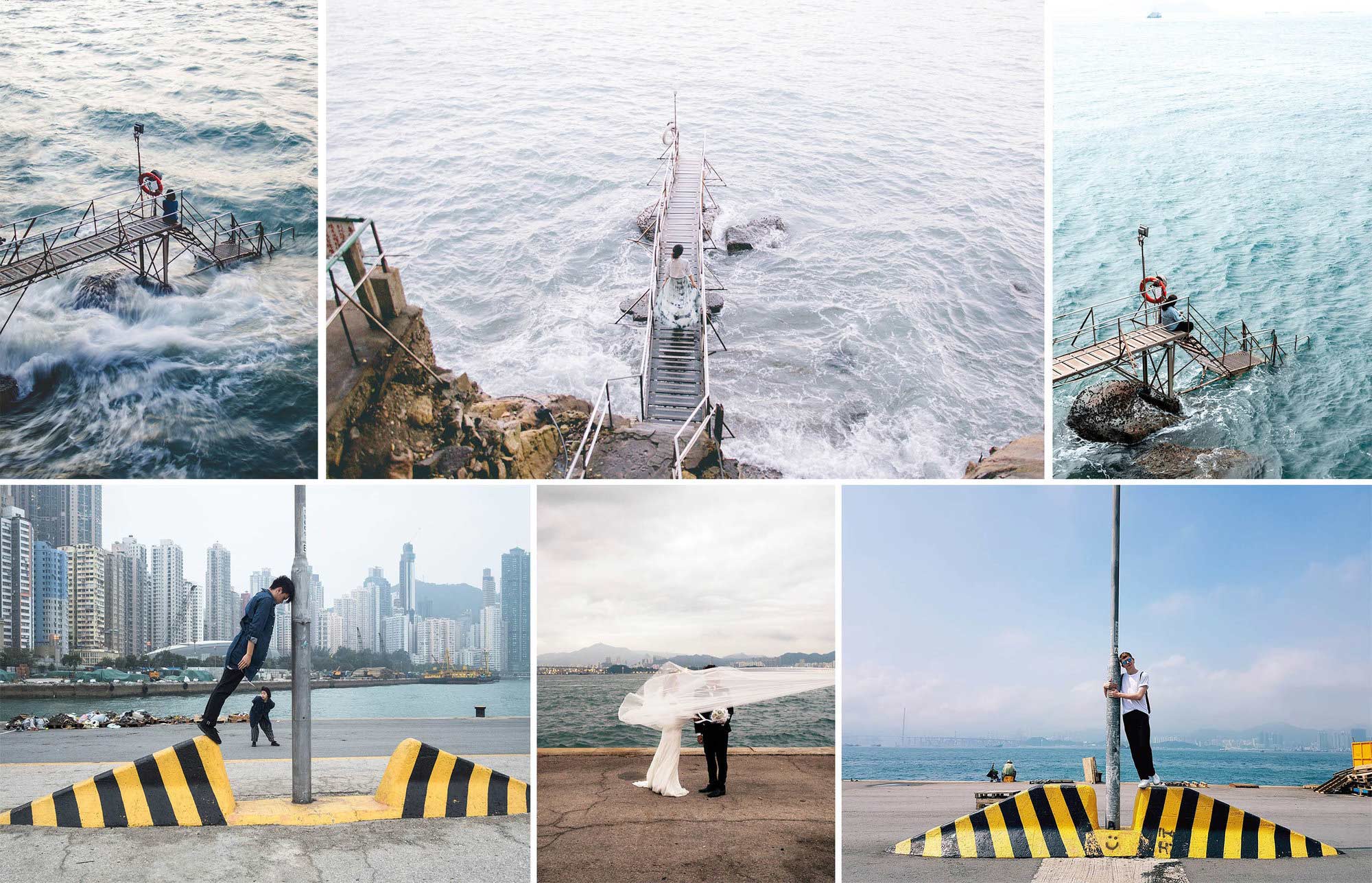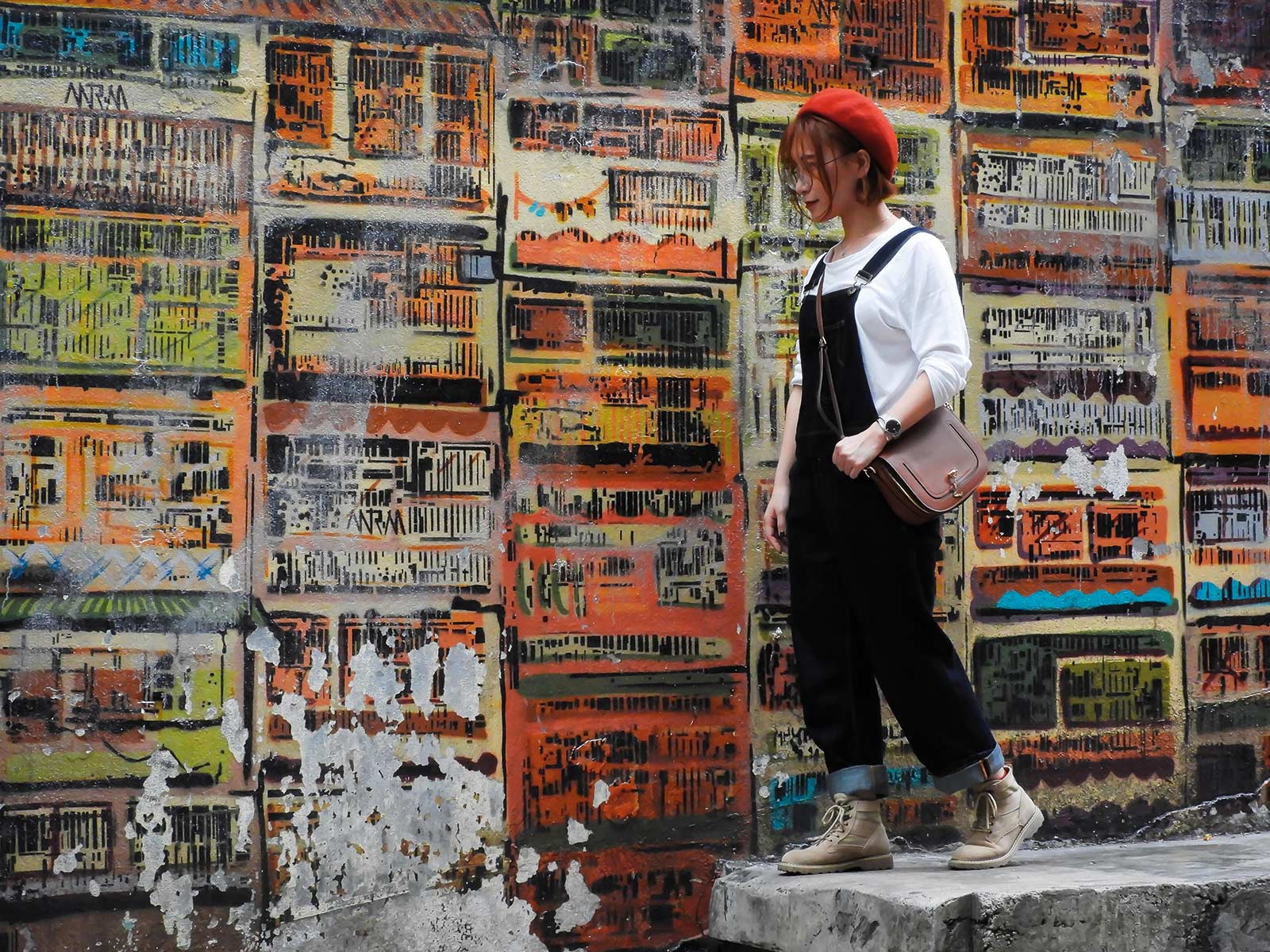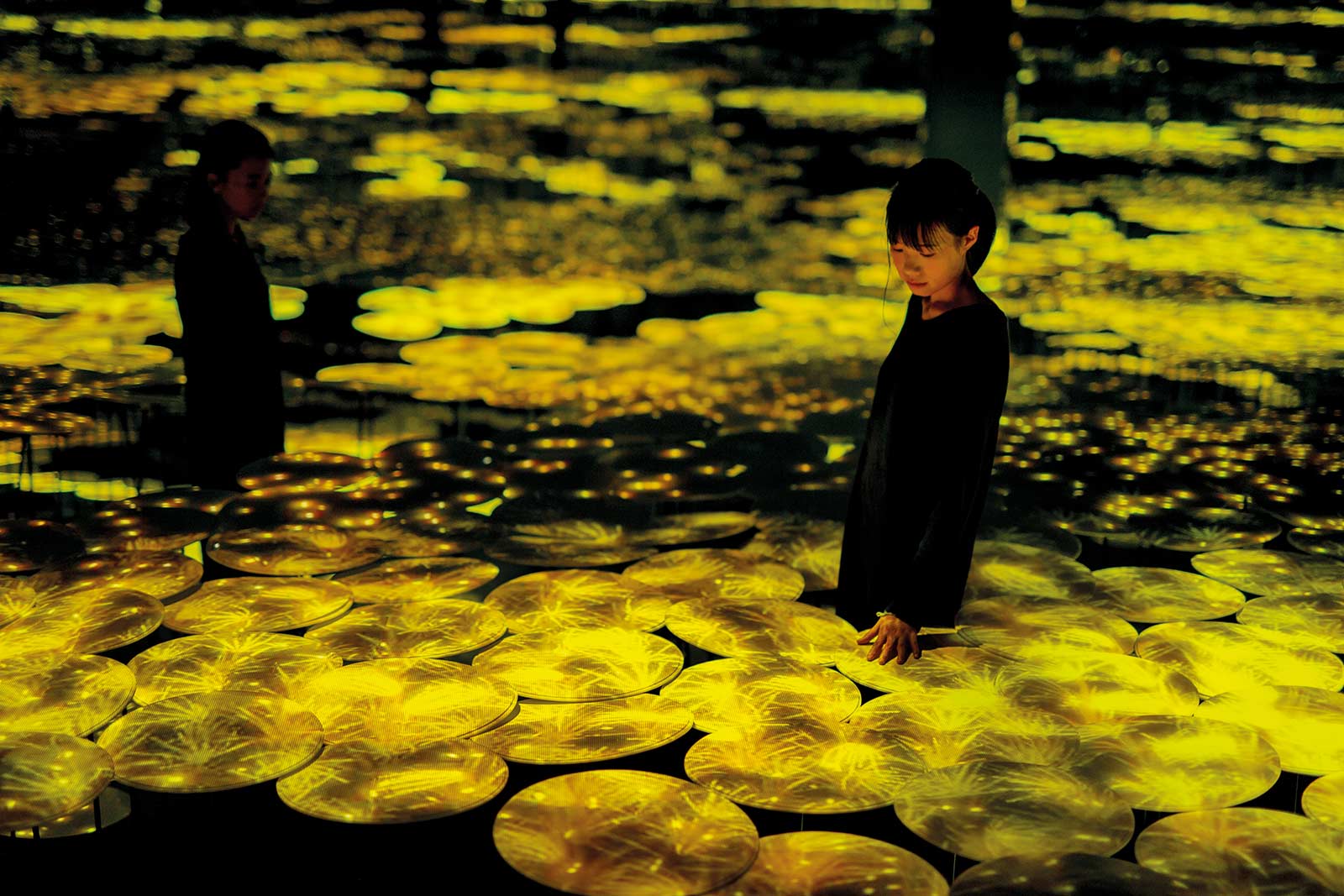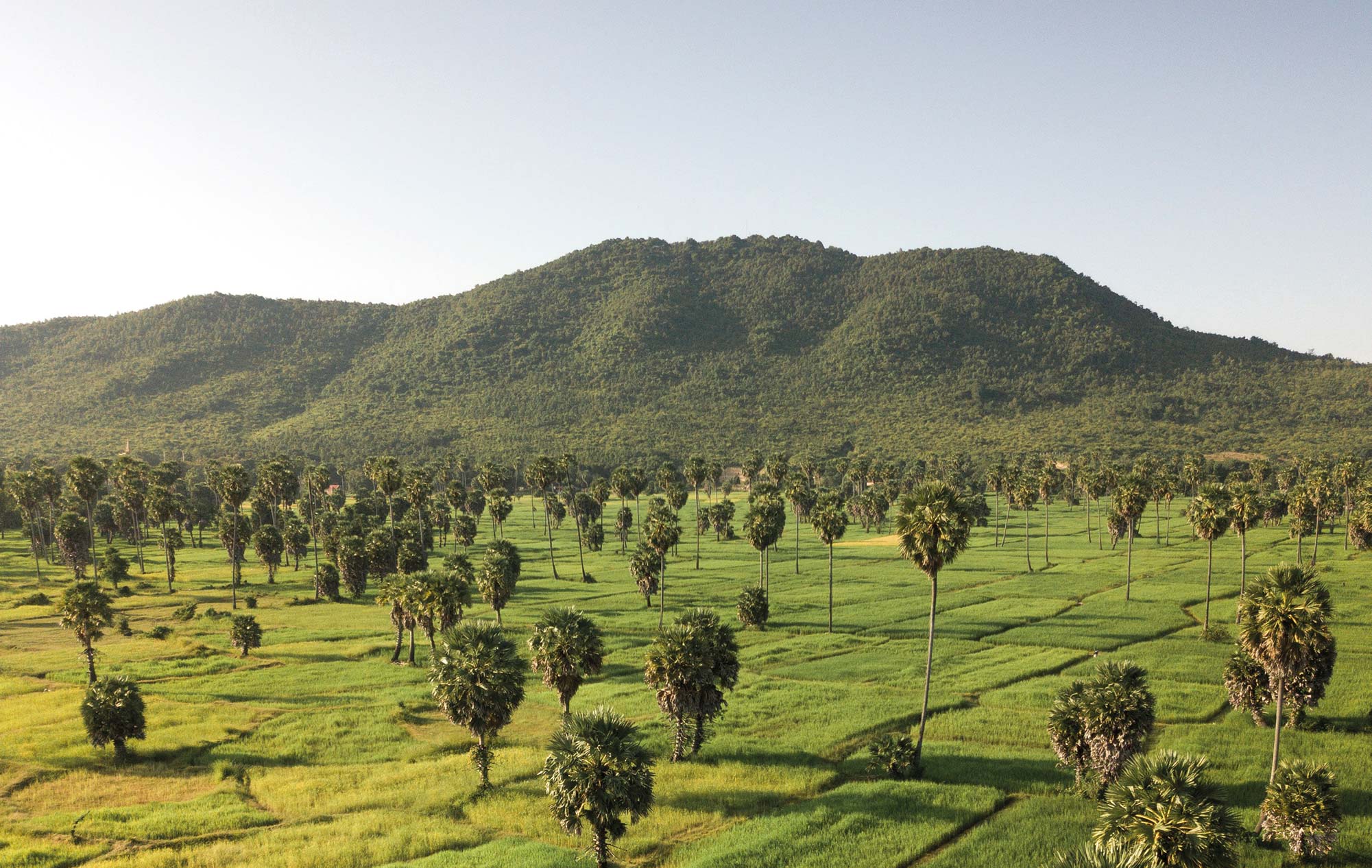At the western end of the north face of Hong Kong island, a rickety wooden structure juts out into the harbour. The waves slap against the rocks beneath. Standing at the far end of the pier, you’re thrust out into the ocean. Just you and the water: the very essence of Hong Kong.
Well – just you, the water, and the line of people behind you also waiting for the perfect Instagram shot.
The pier, together with the equally rickety structure behind it, is known as the Sai Wan Swimming Shed. It’s the last of its kind, built by the government in the ’60s to allow the populace to take the waters. A small core of die-hards still swims at Sai Wan, particularly at sunrise. But as they leave, a younger crowd arrives. A crowd enticed not by the restorative effects of Hong Kong’s harbour – but by this pier’s social media juice.

Across Hong Kong and elsewhere in the world, the queues are forming. By mutual assent, by the power of social media to pluck a random place out of obscurity, or by sheer luck – these destinations are becoming must-grams, for better or worse. With that comes a willingness to travel further, to see more – even if it’s just for the sake of the shot.
Hong Kong’s most-photographed wall runs along one side of Graham Street in SoHo, right in the middle of town. A mural alongside the G.O.D lifestyle store depicts densely packed traditional tong lau houses crammed along the street, a mix of oranges and yellows and greens against a perfect blue sky.

‘I painted that wall before I used Instagram,’ says Hong Kong artist Alex Croft, who was commissioned by G.O.D to paint it in 2012. It was never meant to be a permanent fixture, but social success that propelled it to the top of Hong Kong must-see lists, first for the Koreans, then for visitors from the Chinese mainland, and now everyone else.
‘It’s amazing that it has become a place that is now talked about around the world,‘ says Croft. ‘Maybe there is some strange feng shui in that little crossing there. Who knows?’
It’s not all good vibes, though. The wall’s popularity has attracted its share of detractors. This is a busy corner of Hong Kong, and the pavements and roads are almost always blocked by tourists waiting for their shot. Not far from the Sai Wan Swimming Shed, a freight dock has become known as Instagram Pier, with snappers flocking for the on-the-waterfront vibes. The only issue: the ships trying to unload their cargo.
Increasingly, Insta-visitors are journeying farther afield in search of their likes. The Choi Hung Estate in northeastern Kowloon is home to more than 18,000 Hongkongers – and some days, it feels like there are just as many camera-toting tourists as well.
Built in the ’60s, the residential complex is a modernist utopia of straight lines, offset by a spectrum of pastel highlights (choi hung means rainbow). But those tones, and the basketball court beneath, have transformed this estate into a destination for snappers seeking a Hockney-hued slice of life.

Local residents, on the whole, have mixed feelings about the influx. Some have started businesses selling to the visitors, but others just want to be able to play a pick-up ball game without having to weave around yet another languidly posed influencer.
Similarly, the triumvirate of the Yik Cheong Building, Yick Fat Building and Montane Mansion in Quarry Bay – known to most as the ‘Monster Building’ – has pulled in the snappers thanks to its grimy, neon-noir vibes. Shot from just the right angle and at the right time of night, an unbroken wall of buildings hems you in from all sides: a density of aluminium window frames, AC units, dangling laundry, shocks of colour and an ever-present fluorescent glow. Achieving that particular angle, ironically, involves posing atop a low structure adorned with a large sign forbidding visitors from taking photos.
Nowadays, when we research holidays, we scroll through Instagram tags. And even if what shows up is grid after grid of identical photos, we still feel the need to go – to collect that photo for ourselves.
Take the rope swings of Bali. In the last two years, shots of the flawless-of-skin in flowing summer dresses suspended high over the rice terraces of Ubud have crept into every Instagram feed. They’re the perfect expression of the 2018/19 bucolic-tropical look, that mix of warm sunshine and dense tropical green. And it can be yours for US$35 including hotel transfer: Balinese swing setups are now everywhere on the island, a neatly manufactured industry to create the impression of rural idyll.

Also on Bali, the Pura Lempuyang temple has discovered a whole new body of worshippers: those who profess their faith at the altar of social media. Once a relatively undervisited temple, the ‘Gates of Heaven’ have changed all that. These split gates at the temple perfectly frame the volcanic Mount Agung in the background. What better backdrop for the yoga backbend and a mindful pray-hands #namaste?
Then there’s TeamLab Borderless in Tokyo. It bills itself as the world’s first digital art museum – but that also makes it the world’s first museum designed with Instagram at priority number one. Each pixel of this 10,000-square-metre space has been documented online, its iridescent overload captured on a hundred thousand smartphone sensors. And while Singapore has plenty of Instagrammable sights, perhaps nowhere is this more the case than the Marina Bay Sands. Partly thanks to its rooftop infinity pool, which is exclusive to hotel guests, occupancy at the property hovers resolutely around 98 per cent some eight years after opening.

We are photo-obsessed. I count myself as guilty. I’ve dangled from the bathroom window of a train rattling along Vietnam’s Hai Van Pass to snap perfect crescents of curving railway and sandy bay beneath. I’ve lost the feeling in my fingers to nail that sunset at the Twelve Apostles on Australia’s Great Ocean Road. I’ve driven down (and almost off) dirt tracks in a seven-seater just to score a low-angle landscape in Ronda, Spain. And more often than not I’ve been rewarded with photos that are… just like everyone else’s.
And that’s fine. I’m no Insta-influencer. I don’t look particularly impressive in a bikini. But think about what’s gained, what more than the photo itself. An Insta-tourist to Hong Kong might not ever otherwise set foot in a Hong Kong housing estate, look twice at the city’s street art, or touch the salt spray of the western harbour. I hope they’ll remember it long after the likes stop trickling in.

What I remember is everything around the shot. I remember the Vietnamese railway worker sauntering back to his signal hut. I remember the orange-on-yellow-on-blue as the waves broke against the limestone towers of Victoria. I remember the panic as a Spanish driver rounded the tight bend in front of me… and the relief when he started to back up.
Life, say those irritating Insta-inspiration posts, is about the journey; not the destination. But in one way, at least, it holds true. If you did it for the gram – at least you did it, man.













